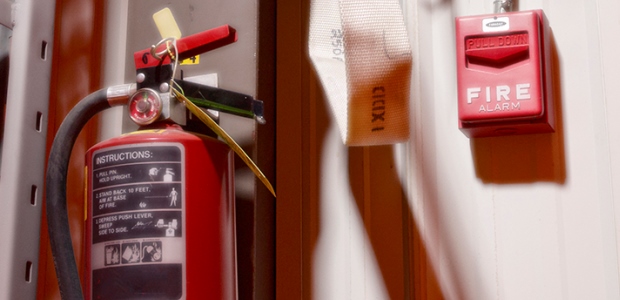
Fire Alarm or Test?
Let's work on designing and conducting tests and drills so that alarms are for emergencies and the employees respond in a safe and proper manner.
- By John R. Bennett
- Mar 01, 2017
The sound of typing fingers on a computer keyboard. The laser printer printing copy after copy of the latest hot financial report for the 9:30 a.m. board meeting. The sound of phones ringing and paper shuffling.
All of these sounds produce a rhythm to office life. This rhythm continues throughout the day, with the exception of the scheduled breaks and lunch. Very few interruptions to this concerto of work are tolerated.
A loud fire alarm starts its whining and the strobes start their blinding flashes of warning that a fire is imminent. Or is it? No smoke is visible, and no one is going for the exits. It could be that annoying annual test that someone forgot to warn everyone about over the intercom. It could be the annual drill, but this project is more important to the company than going outside to a collection point to be counted so the Safety Coordinator can make a note on his or her checklist that it was done—or even to compare the speed to that of other plants and last year, justifying their value and usefulness to executive management.
The fire alarms at the office in which I work just went off on their own yesterday. As I was going down the hall to check the alarm display, other employees were coming my way, away from the exit, wanting to know whether there is a fire or not so that they can get back to work. Speaking with Wes, a fire systems technician from our third-party inspection company, we discussed the lack of response to fire alarms and the problems that scenario could cause. People are so caught up in the day-to-day rituals of work and life that their own safety is not as big a concern, or is it?
The alarm system is tested at least annually and then there is the annual fire drill—and drills are taking place even more frequently for schools. We hear the alarm several times a year and, for the majority of soundings, no emergency is real. It appears that this has muted the desire to respond to the alarms. Is there anything we can do to take this back and get the correct responses from the workers and save more lives?
Making Employees More Responsive to Real Emergencies
Drills and testing of the alarms and systems are needed, but so are new and innovative ways to conduct them and to keep people responding appropriately. It is apparent that sounding the alarms is not getting the correct response. So what about reducing the employees' sensitivity to the false alarms and training them that if the alarm goes off, it is a real situation? Many organizations are working on this right now.
You must hear the alarm to make sure it is working. NFPA 72 requires annual testing and visual inspection of horns, strobes, chimes, bells, etc. A short burst should be fine during the once-a-year NFPA-required audible testing. With notice given to all employees, this should not be a problem. If your operations have downtimes where there is little or no staff, weekends or even after hours, then those times may be better. Working the schedule around will have the employees less sensitized to the alarms.
Conducting fire drills is another time when the alarms are set off. Maybe use the intercom or paging system instead of the actual alarm. The idea here is the same as moving the audio testing: to get the employees away from hearing false or drill alarms and thus make them more responsive to a real emergency. Possibly conduct the drills at a pre-determined day and time, for instance, every first Monday of the month at 3 p.m.
Training the employees to follow your fire emergency plan when the fire alarms go off is vital. Getting the clutter of testing and drills out of the way and training the employees that when they hear the alarm, it is not a test, is what can help companies save lives.
By the way, the fire alarm that went off yesterday was not an actual fire, but a loose wire in the sprinkler systems poppet for system flow. We are also a small company in a small building, and almost everyone is within shouting distance.
Mechanical failures may happen, but the response to the alarm should remain the same.
Let's work on designing and conducting tests and drills so that alarms are for emergencies and the employees respond in a safe and proper manner.
This article originally appeared in the March 2017 issue of Occupational Health & Safety.